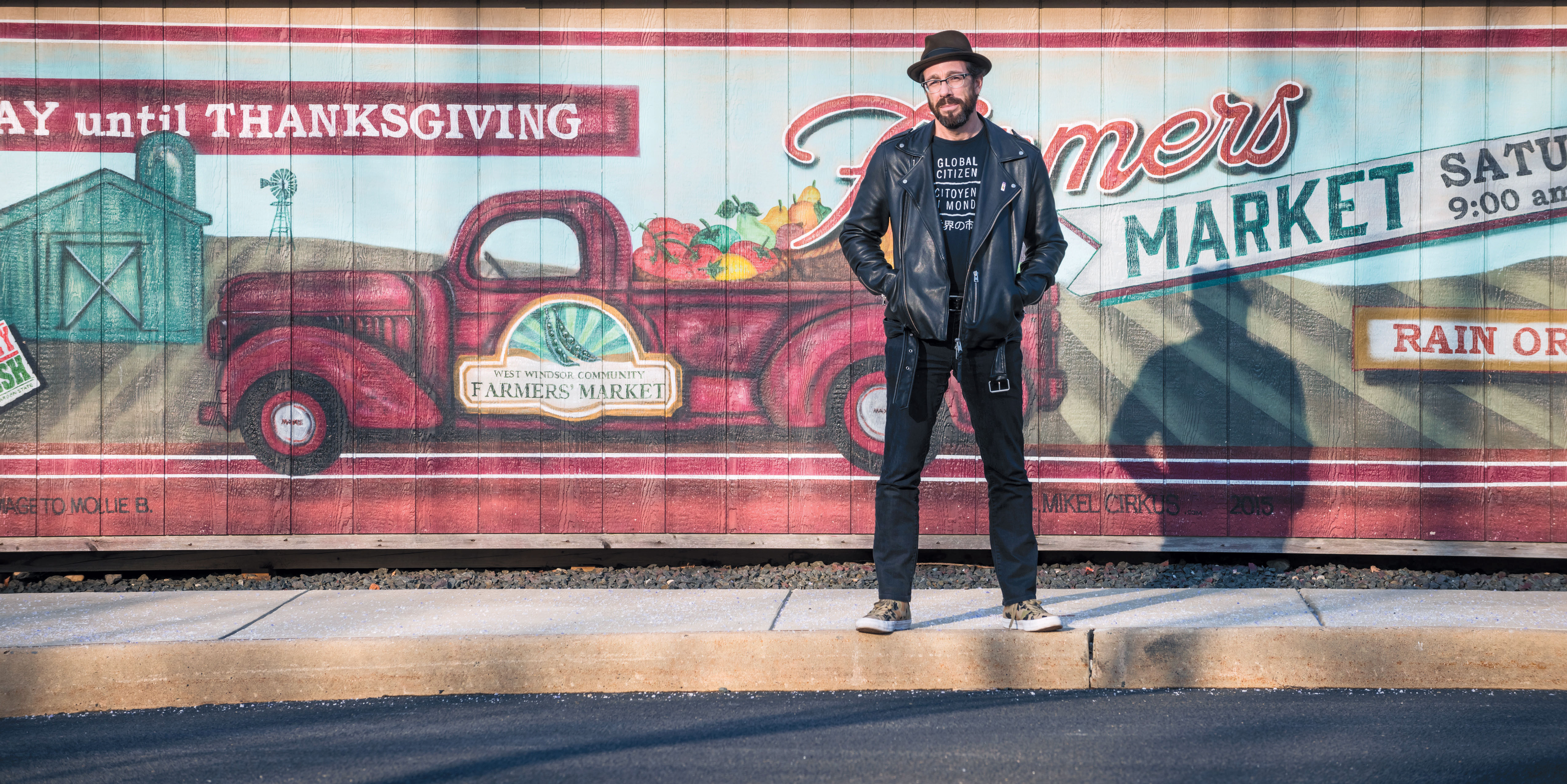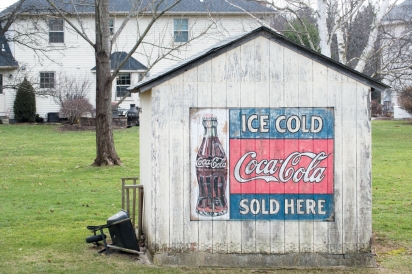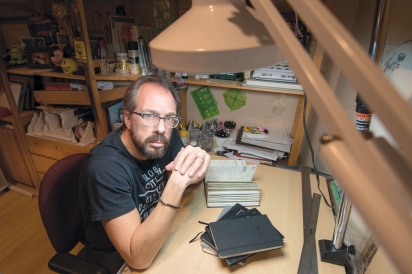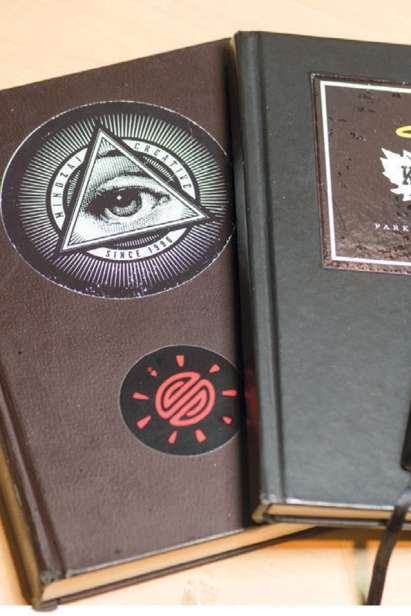Mikel Cirkus, the New Jersey Taste Maker
The New Jersey man who knows the future of food
Five hundred years before the birth of Christ, King Croesus of Lydia asked the Oracle of Delphi if he should wage war on the Persians. If he did, the Oracle foretold, he would destroy a great empire. The prophecy was fulfilled when the Persians crushed Croesus’s army—a graphic reminder that how we interpret and act on information determines its ultimate value.
As global director of conceptual design in the flavors division at Firmenich, a global flavor and fragrance company headquartered in Plainsboro, Mikel Cirkus also traffics in prophecy. The messages he gathers and dispenses, however, come not from the spiritual realm but from streets and gathering spots in edgy neighborhoods around the world. His job is to seek out inspiration that can catalyze new product development and innovation for Firmenich’s internal teams—as well as for its customers, which include major manufacturers of consumer packaged goods worldwide.
A New Jersey native, Cirkus began recording sketches, ideas and inspirations in personal journals while still in high school—a habit he continues to this day. After earning a degree in advertising design, he worked as a creative director in advertising, packaging and graphic design at several NJ-based agencies before joining Firmenich. His background in design, illustration and creative thinking enables Cirkus to go well beyond simply compiling images and observations. He interprets and analyzes those observations—looking for patterns, connections and commonalities that give him insight into what will influence the food and beverage industry in two to four years and beyond. He weaves images, stories and cultural insights into narratives that forecast global trends and inspire innovation. Sharing these insights into the changing consumer landscape is a value-added service the flavors division provides to its customers.
A little time spent in conversation with Cirkus quickly reveals the qualities that make him well suited to his job. He has an intense and lively curiosity and constantly comments on details that escape the notice of those less deeply engaged in their surroundings. He’s a quick thinker who can analyze on the fly and connect seemingly unrelated ideas. He’s energetic and focused. And, as a look through his website will confirm, he is deeply creative—working in a range of media, from poetry to photography to travel logs to illustration to graffiti. “I’m not a marketing guy. I’m not a trend guy. I’m not in sales,” Cirkus says.
“I’m a designer with a unique perspective on the world that I’m seeing. As an artist and designer, I was always overly aware of everything.” That awareness is what enables Cirkus to detect shifting cultural values and influences early on. That’s crucial for large food companies, which require a long lead time to bring new food and beverage products to market.
Cirkus notes that in
16-plus years of
interpreting signals from
the cultural fringe, he
and his colleagues have
never been wrong.
Take matcha (green tea), for example. No one attending the 2016 Summer Fancy Food Show, the Specialty Food Association’s largest annual trade show, could miss seeing that matcha has moved beyond the beverage category and is now being used to flavor a wide range of food products. For retailers, chefs and artisan producers, it is easy to pick up on this trend and offer matcha-infused products to their customers. For large food companies with wide distribution, however, it isn’t so easy to jump in on the matcha trend now. Ideally, they would have foreseen today’s growing interest in matcha years ago—much like companies that foresaw the explosive growth of coconut water back when it was only sold in yoga studios. “Nobody makes something tomorrow,” Cirkus says. “If I have to make a product and have it on store shelves two years from now, the development of that starts now.”
In her TED talk on the art and science of trend tracking, Alison Sander, head of the Boston Consulting Group’s Center for Sensing and Mining the Future, compares capitalizing on a trend to surfing. In order to catch a wave, a surfer must be patient and observant, scanning the water for the first, barely visible sign of a developing wave. Successful companies put much of their energy into detecting emerging trends and tracking their pace, she says, as they wait for the right moment to launch a new product or service. The trick is to be ready to act when the wave hits as it is difficult to ride a wave if you jump in too late.
Cirkus’ goal is to detect those nascent cultural waves. When he walks through the Fancy Food Show (or South by Southwest or Burning Man or the streets of a city neighborhood), he’s not looking for what’s hot today. He’s searching for signs of what may be hot years from now. To do that, he isn’t tracking trends: he’s observing change.
Companies today, Cirkus notes, are inundated with trend information. The difference that he brings is that out on the streets observing and recording, firsthand, the changes that occur over time—returning to the same neighborhoods time and again to make note of what’s new, what has evolved, what remains unchanged and what has disappeared. “Observing the changes taking place on the streets of edgy areas in uber-creative cities around the world,” Cirkus wrote in an article on LinkedIn, “gives insights to the many messages and themes driving consumer trends.”
In The Deviant’s Advantage: How Fringe Ideas Create Mass Markets (Random House Business Books, 2003), authors Watts Wacker and Ryan Mathews explain that many mainstream market successes begin as the ideas of “positive deviants” living on the cultural fringe. Those ideas, they write, then move through a series of stages—Fringe, Edge, Realm of Cool, Next Big Thing and Social Convention—en route to becoming mainstream. Wacker and Matthews also note that the initial “deviant” idea undergoes significant changes at every stage.
Early in his career, Cirkus explored stores on Main Street to see what was new. He quickly ventured on to exploring niche shops, cafes and markets in edgier neighborhoods—the creative centers on the cultural fringe where artists, innovators and early adopters are constantly exploring new ideas. It was in those neighborhoods that he found one of his primary subjects of observation—street art. “The messages in the street were very pertinent to what was happening in society at that time from an artist’s perspective, and from an edgy artist’s perspective on top of that,” Cirkus says. “We started capturing that and started collecting the messages, the themes, around some of these ideas—and the colors. And then we started to notice the patterns, because we are boots on the ground.”
Sometimes the connection Cirkus creates between street art and flavors is literal. “For instance, in 2010, I was seeing a lot of flame-orange color in the streets worldwide,” Cirkus wrote in an email. “The following year, Pantone declared their Tangerine Tango as Color of the Year, which, by the naked eye, is a shade or so different than the color I had been tracking in the streets.” Weaving his firsthand observations together with inspirations gathered at his first visit to Burning Man, Cirkus created a flavor concept he called “Burning Mandarin.” That flavor concept, backed up by his collected observations, was then presented, along with other concepts, to selected customers to inspire their thinking on new flavors or flavor directions for their products.
“It’s all story,” Cirkus says. “But it has to be the right story. That’s part of my conceptual design. I’m not just bringing you a story for the sake of a story. It’s got to fit your brand.” It may takes years, and multiple iterations, before the flavor concepts that Cirkus presents ever show up in the marketplace. “Flaming Citrus,” for example, has shown up on many lists of predicted trends for 2017—seven years after he logged his initial color observations around flame orange. More often, Cirkus goes beyond the literal to focus on the underlying meaning in street art. Insightful interpretation reveals shifting cultural values that may represent emerging opportunities for the food and beverage industry.
“When you go to the street, you start to understand that it’s a dire expression—it’s a dire need to communicate something that people are feeling about what’s going on in the world,” Cirkus says. “Nobody is capturing the messages the way we are and really looking for what these people are saying. When you pull that out, we’ve been able to develop some very big stories that then becomes the backbone to develop products around.” Cirkus and his team, for example, followed a progression of street art imagery and messages that began in the early 2000’s with pirate themes such as Jolly Rogers, skulls and crossbones and skeletons. Over time, that moved into images of aliens, astronauts and outer space themes. Then onto Native Americans, braves and warriors. And then soldiers. And now lightweight flying and floating objects such as balloons and wings. “Those are themes that we’ll capture that need interpretation,” Cirkus says. “Interpreting those themes becomes a more discerning eye to connect the dots to help tell a story that may, or may not, connect to an ingredient trend or a customer idea.” (Because of the confidential nature of his work, Cirkus wouldn’t elaborate on how he interpreted the evolution from pirates to angels but his writings refer to a shift from escapism to connectedness.)
Cirkus gathers images and messages about a range of subjects and ideas simultaneously. Those observations are then grouped together over time; those groupings, along with his analysis of the meaning behind what he is observing, are used to build scenarios. If, after several years, scenarios that he is tracking go global and become highly relevant, Cirkus will recommend that they become a part of the Trenz® assessment. Trenz®—Firmenich’s proprietary strategic forecasting tool, which Cirkus and a colleague designed—helps the company foresee and create consumer trends based on the deep cultural insights that Cirkus and his colleagues develop through observation, interpretation and connecting the dots.
Exactly how the Trenz® tool works is proprietary but its effectiveness is clear. Cirkus notes that in 16-plus years of interpreting signals from the cultural fringe, he and his colleagues have never been wrong. “Is that some kind of genius foresight?” he asks. “No, it’s just tapping into a flow of information that’s going on out there that most people aren’t paying attention to.”
“Nobody makes something tomorrow,”
Cirkus says. “If I have to make a product
and have it on store shelves two years from
now, the development of that starts now.”
To inspire creativity in others, Cirkus knows he must make them aware of the things he is paying attention to and encourage them to see the world through an artist’s eyes. To that end, he leads customers and colleagues on “Trenz® Walks” to observe street art firsthand in cities throughout the world. A street artist himself, Cirkus is well versed in the vernacular of graffiti and in its culture. On Trenz® Walks, which might take just an afternoon but sometimes extend over several days, Cirkus explains why the art is there and what it represents as well as examining the colors, messages and techniques. “I’m guiding them in their own downtown because, even if they have been there, they’re not seeing it with the eyes that I’m seeing it with,” Cirkus says. “That’s the awakening for them that changes their perspective—that makes them aware of what I’m aware of.”
To Cirkus, the artist’s eye is more of a verb than a noun. “It starts with sight, but it becomes more than something you just see. Anyone can see what you’re looking at. But your vision is unique,” he says. He uses the example of being able to “see” something in black and white, even though it is right in front of you in full color. “Truth is,” he says, “an artist’s eye is not reliant on the eye itself at all. It’s in the mind—the thinking and the execution, which can be in any medium or take any form.”
Sometime during his seventeen years at Firmenich, it dawned on Cirkus that his work there is a continuation of what he has been doing for his entire creative life. Far beyond Firmenich’s role as a supplier of ingredients, Cirkus sees creativity as the essence and foundation of what the company does. “Our flavorists, or any of our technical people, are not just scientists—they are creative. The industry as a whole is creative,” Cirkus says. “For me, as a creative person, to have the ability to do what I do here, it’s like a dream job. I work multisensorially with really talented, enthusiastic, passionate people in a field that’s all about eating and drinking. What could be better than that?”
“The fact that I’m able to go to these places and see these things and report back with some intelligence is a dream job. It really is,” he adds. “I forget that I get paid to do what I do.”
SEEING THROUGH AN ARTIST’S EYES
On Mikel Cirkus’s website, you will find his culinary photography (“Eye Candy”), art and writing (“Portfolio”), and blog posts about his travels (“Excursions”). His Street Cirkus blog takes readers to “The World’s Coolest Streets in the Trendiest Areas,” and his Instagram feed is full of examples of how he reinterprets subjects through his own unique perspective.
FIRMENICH’S FLAVOR OF THE YEAR
Firmenich’s 2017 Flavor of the Year is cucumber. “The Flavor of the Year is not always necessarily what’s trending so much as what did we see the most of last year,” Cirkus says. Cucumber “is showing up all over the place, in multiple categories, in places it’s never been before, like yogurt and soft drinks.”
In a press release announcing their choice, Firmenich stated that it “predicts that cucumber’s popularity will grow throughout 2017 because of its relevance to three global meta-trends that the company is monitoring: namely Refreshment, Health & Natural, and Fermentation & Pickling.”











